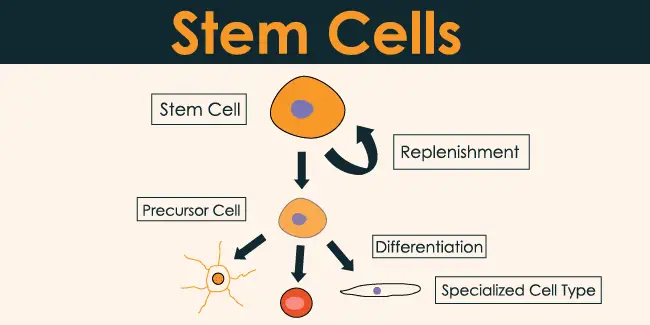
What are Stem Cells ?
What are stem cells: They are the precursor cells of all the cells and tissues of our bodies. One of their main features is their ability to self-renew or increase the amount in the body. They are suppliers of new cells. These cells can become blood cells, heart tissue, skin, muscles, brain, etc.

There are different stem cells, but all of their types have the ability to turn into different types of cells. The type of cells that the cord is rich in is the same as the bone marrow. This type of cell gives growth to all blood cells and is the foundation of our immune system.
What are stem cells used for and its types?
The stem cells used for:
- Differentiates into damaged cells and regenerates them into normal cells
- Regenerate damaged cells
- Immune regulation by normalizing the functions of immune-related organs
- Regenerate damaged blood vessels to help supply blood normally
- Improves tissues in the body by promoting growth factors such as collagen and hormones
- Prevent cell death in the human body
Types:
There are several types:
- Embryonic stem cells: These cells come from a structure that forms a few days after the egg is fertilized by the sperm. These characteristics are being used to differentiate embryonic stem cells into desired tissues and regenerate them when tissues are damaged due to injury or disease, etc.
- Adult stem cells: They are found in a certain tissue in our body and generate the specific types of mature cells within that tissue or organ. Since it is a cell that has already differentiated to perform a specific function, the degree of differentiation and the applied disease are different for each stem cell.
According to differentiation potential, it can be divided into:
- Pluripotent stem cells: These cells have the ability to produce multiple types of cells. The ability and developmental potential of the whole body are limited. They have the potential to differentiate into a variety of cellular tissues. They have Freedom of ethical controversy.
- Totipotent stem cells: have the ability of self-renewal and differentiation to form any type of cell, and have the differentiation potential to form a complete individual.
- Unipotent stem cells: It is often used to describe a type of cell in adult tissues and organs, meaning that such cells can only differentiate in a single direction to produce one type of cell. They can only differentiate into one or two closely related cell types. Such as neural, hematopoietic stem cells.
I guess you want to learn more about it.
Come go more in-depth.
Where are stem cells found?
In the adult human body, stem cells are found in the bone marrow and that can be transplanted to those with blood diseases, such as leukemia. But in other cases, these cells are found in the brain, in the deepest layer of the skin, the dermis, in the dental pulp, and in the umbilical cord.
However, the real mine of totipotent cells which can, therefore, be used to replace cells affected by genetic deficiencies, to rebuild damaged parts of the skin, etc. is the human embryo.
What is Stem Cell Therapy:
Stem Cell Therapy is used to repair damage inherent in a tissue, organ, or specific function. In any case, in order to be able to talk about therapy, first of all, there must be a demonstration in the laboratory capable of certifying the functionality of the treatment, illustrating in detail the modalities.
When the treatment is considered safe and effective at a pre-clinical level, a validation must first be carried out on a small sample and, subsequently, on a higher number of subjects to verify that therapy is tolerated.
Only at this point, can treatment be proposed as an alternative to the clinical options available.
